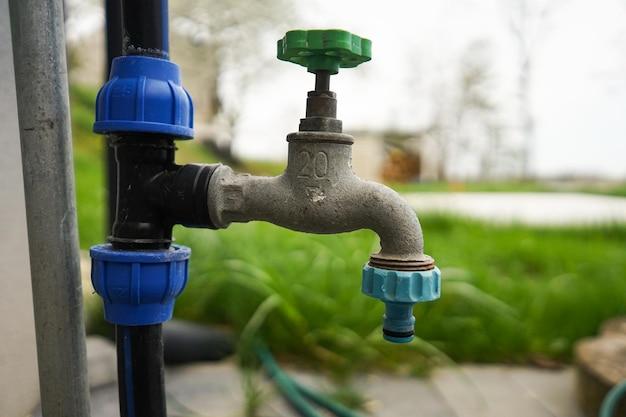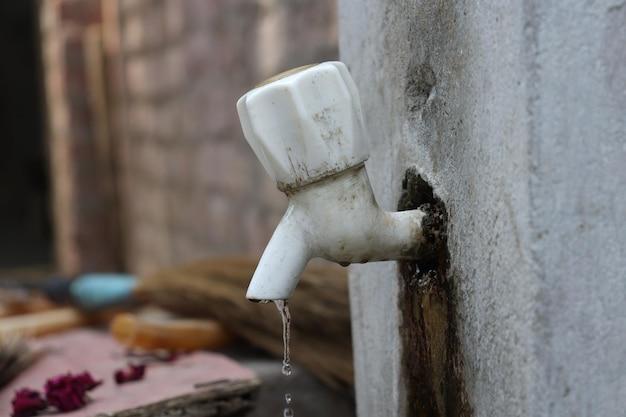Are you experiencing the frustration of a burst upper radiator hose in your vehicle? It can be a bothersome and potentially dangerous issue, leading to overheating and engine damage if not addressed promptly. In this blog post, we will explore the common causes behind a burst upper radiator hose and provide valuable insights to help you prevent and troubleshoot this problem.
From coolant leaks to excessive pressure, several factors can contribute to the failure of an upper radiator hose. Join us as we delve into each possible cause, including the signs to watch out for and the steps you can take to avoid a breakdown on the road. Additionally, we will address frequently asked questions, such as the cost of hose replacement and how to stop your coolant hose from leaking.
Get ready to gain a deeper understanding of the inner workings of your vehicle’s cooling system and equip yourself with the knowledge to tackle upper radiator hose issues with confidence. Let’s dive in!

What Causes an Upper Radiator Hose to Burst?
Overheating Nightmare: Why Your Upper Radiator Hose Might Burst
We’ve all heard of the great American dream, but what about the great American radiator hose? Okay, maybe it’s not quite as glamorous, but when that upper radiator hose bursts, it can definitely turn into a nightmare. So, what exactly causes this catastrophe to occur? Let’s dive into the sizzling world of overheating engines and unravel the mystery behind this rubbery disaster.
Hot Hot Heat! The Culprits Behind the Burst
-
Pressure Build-Up: Picture this – you’re sitting in traffic on a sweltering summer day, sweat pooling at your brow, and suddenly your upper radiator hose explodes like a confetti cannon. One of the main reasons this might happen is due to excessive pressure build-up within the cooling system. When your engine gets too hot, the coolant starts boiling, creating a dangerous surge in pressure. This can put immense strain on the upper radiator hose, leading to an explosive blowout that no one wants to experience.
-
Age Ain’t Just a Number: Just like fine wine, radiator hoses don’t always age gracefully. Over time, these vital components can deteriorate due to exposure to extreme temperatures and constant exposure to coolant. The rubber might lose its flexibility, become brittle, and develop cracks, leaving your upper radiator hose vulnerable to bursting. If you’re still rocking the original hoses in your vintage ride, it might be time to plan a little upgrade to prevent any unexpected roadside steam shows.
-
Hopelessly Clogged: Radiator hoses are more than just fancy conduits for coolant; they also serve as superhighways for coolant flow. However, if your cooling system isn’t properly maintained, debris, gunk, and sludge can build up over time, causing blockages that obstruct the flow of coolant. When this happens, the pressure within the hose intensifies, raising the risk of a catastrophic rupture. So, don’t forget to show your cooling system some love, and keep it squeaky clean.
Prevention: Dance in the Rain, Avoid the Splash
Now that you know some of the common culprits behind a bursting upper radiator hose, let’s explore a few preventive measures to help you avoid this hot mess:
-
Regular Inspections: Stay vigilant and regularly inspect your radiator hoses for any signs of damage, wear, or weakness. Swiftly address any issues you discover to prevent a sudden hose explosion at the most inconvenient of times (because hose explosions are never convenient).
-
Cooling System Flush: Give your cooling system some heavenly hydration by periodically flushing it to remove any build-up of sediment, sludge, or rust. Flushing your system will help keep those hoses flowing smoothly and reduce the risk of pressure overload.
-
Temperature Gauge Awareness: Keep an eye on your temperature gauge like a dedicated parent watching their kid’s first dance recital. If you notice your engine running hotter than usual, take action immediately. Pull over, turn off the engine, and let it cool down before inspecting the radiator hoses. Quick intervention can save you from a burst and an untimely end to your road trip.
Nobody wants to experience the chaos and steamy drama of a bursting upper radiator hose, but with a little preventative TLC, you can steer clear of this automotive nightmare. Remember to keep an eye on pressure build-up, replace worn-out hoses, and maintain a clean cooling system. By doing so, you’ll be well on your way to cooling down the hottest of situations. Stay cool, my friends!

FAQ: What would cause an upper radiator hose to burst?
How much does it cost to replace an upper coolant hose
Replacing an upper coolant hose typically costs around $100 to $300, including parts and labor. The exact price may vary depending on your location and the make and model of your vehicle. It’s always a good idea to consult with a trusted mechanic to get an accurate estimate.
How can I tell if my coolant hose is in bad condition
There are a few signs to look out for when determining if your coolant hose needs attention. Firstly, check for any visible cracks or leaks in the hose itself. Additionally, if you notice coolant pooling underneath your vehicle, or if your engine is overheating, it could be a sign of a failing coolant hose. Keep an eye out for any warning lights on your dashboard as well. If you suspect any issues with your coolant hose, it’s best to have it inspected by a professional.
Can I use Flex Seal on a radiator hose
While Flex Seal is known for its versatility, it’s not recommended to use it as a repair solution for a radiator hose. Radiator hoses are constantly subjected to high pressure and extreme temperatures, causing Flex Seal to potentially break down or fail. It’s safer to replace a damaged radiator hose with a new one to ensure proper functionality and avoid potential engine damage.
Which hose is connected to the coolant
The upper radiator hose is the one connected to the coolant system. It carries coolant from the radiator to the engine, allowing for proper cooling. The upper hose is typically larger in diameter compared to the lower radiator hose.
What factors can cause an upper radiator hose to burst
Several factors can contribute to the bursting of an upper radiator hose. The most common causes include:
-
Wear and Tear: Over time, the hose can degrade due to constant exposure to heat and coolant. The combination of age and usage can weaken the hose, leading to a potential burst.
-
High Temperatures: If the engine overheats, it puts excessive pressure on the coolant system, causing the upper radiator hose to burst. This can occur due to a malfunctioning thermostat, a faulty water pump, or a blocked radiator.
-
Coolant Contamination: When air or other contaminants enter the coolant system, it can create air pockets or blockages. These obstructions can cause pressure to build up and ultimately lead to hose failure.
How much does it cost to replace a radiator hose
The cost to replace a radiator hose can range from $50 to $150, depending on various factors such as the make and model of your vehicle and the location of the hose. It’s important to consult with a reputable mechanic to get an accurate estimate for your specific situation.
Why does my radiator hose keep popping off
If your radiator hose keeps popping off, it could be due to a couple of reasons:
-
Improper Installation: If the hose clamp is not properly tightened or secured, it can cause the hose to detach from the connection point. Ensure that the hose clamp is tightened to the appropriate specifications.
-
Pressure Buildup: If there is excessive pressure in the coolant system, it can cause the hose to pop off. This can be caused by a malfunctioning radiator cap, a faulty thermostat, or a blocked radiator. It’s important to have your coolant system checked by a professional to diagnose and resolve the issue.
How can I prevent my coolant hose from leaking
To prevent coolant hose leaks, follow these tips:
-
Regular Inspections: Routinely check your coolant hoses for any signs of cracks, leaks, or bulges. Catching any issues early on can prevent major failures in the future.
-
Proper Maintenance: Ensure that your coolant is regularly flushed and replaced according to the manufacturer’s recommended intervals. This helps prevent coolant contamination and the buildup of debris that can contribute to hose failure.
-
Careful Coolant Handling: When performing any coolant-related tasks, such as topping up the level or replacing the coolant, make sure to handle the coolant with care. Chemicals in coolant can deteriorate rubber hoses over time, leading to leaks or bursts.
Remember, if you suspect any issues with your coolant hose or cooling system, it’s always best to consult a professional mechanic for proper diagnosis and repair.
Now that you’re equipped with information about upper radiator hose bursts, you can keep your engine running cool and prevent any unexpected hose failures.
